Material description
Material ID: ACP15
Material type: Aluminium composite panel with a core consisting of polyethylene modified with vinyl acetate (PE-VA), a fire retardant, and an inorganic filler.
Polymer: Polyethylene modified with vinyl acetate (30%)
Additives (fire retardants, fillers or traces of inorganic elements): Magnesium Hydroxide (55%), Calcium Carbonate (13%), Silicon (1%), Sodium (1%), traces of other elements (<1%)
Core thickness: 5.3mm
Thickness of single metal skin: 0.5mm
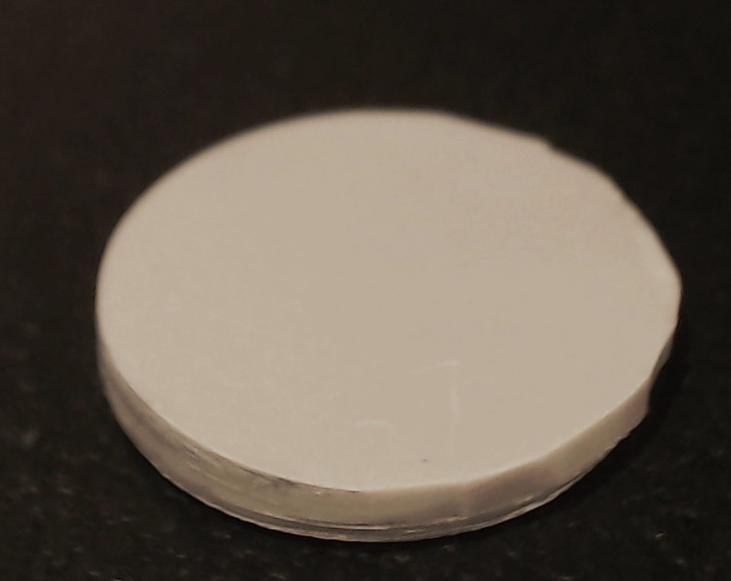
| Compound | Mass Concentration (%) |
|---|---|
| Polyethylene modified with vinyl acetate (PE-VA) | 30 |
| Magnesium Hydroxide (Mg(OH)2) | 55 |
| Calcium Carbonate (CaCO3) | 13 |
| Silicon (Si) | 1 |
| Sodium (Na) | 1 |
| Traces of iron (Fe) | <1 |
| Traces of potassium (K) | <1 |
| Traces of aluminium (Al) | <1 |
A. Material composition identification
A.1 Attenuated total reflection – Fourier transform infrared spectroscopy (ATR-FTIR)
| Identified Compounds |
|---|
| Polyethylene modified with vinyl acetate (PE-VA) |
| Magnesium Hydroxide (Mg(OH)2) |
| Calcium Carbonate (CaCO3) |
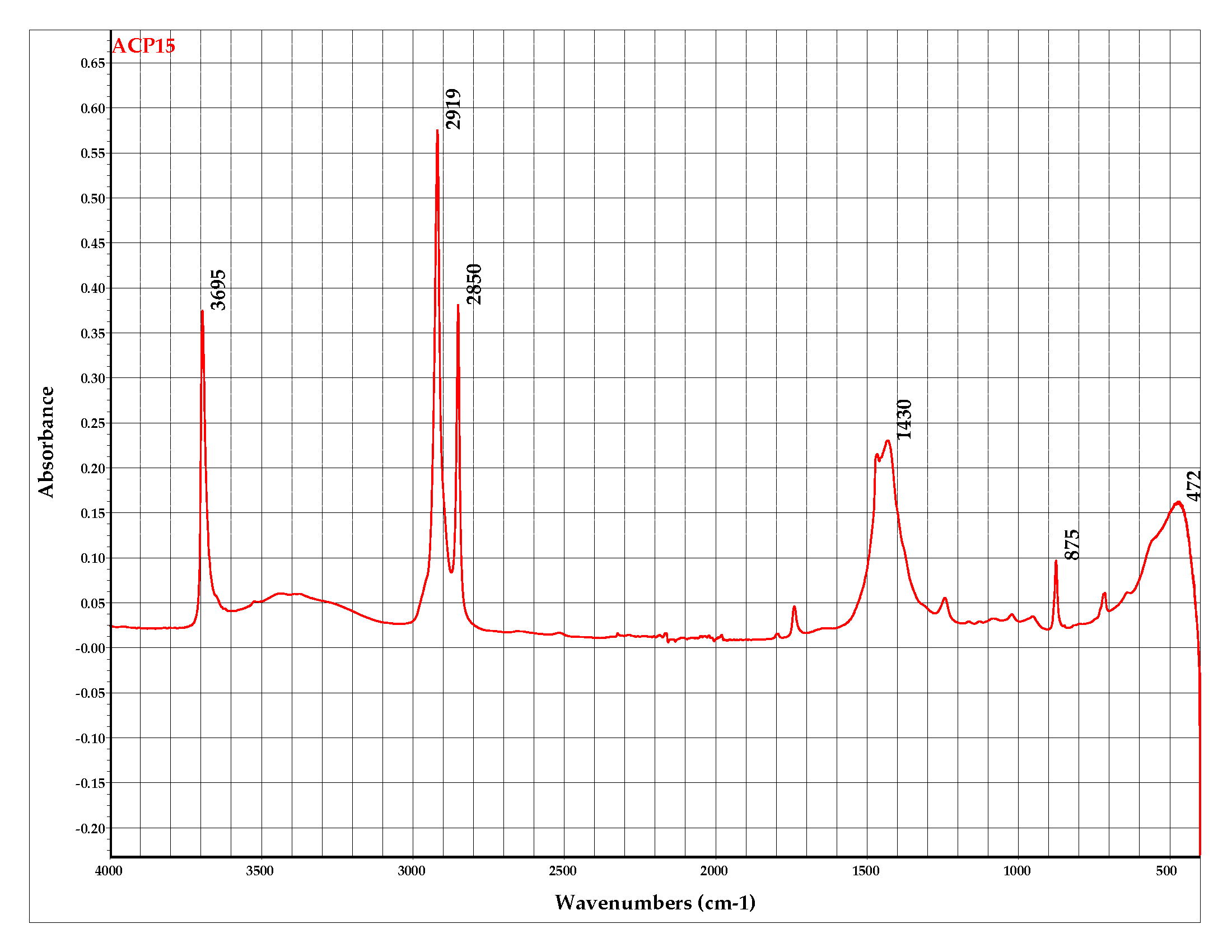
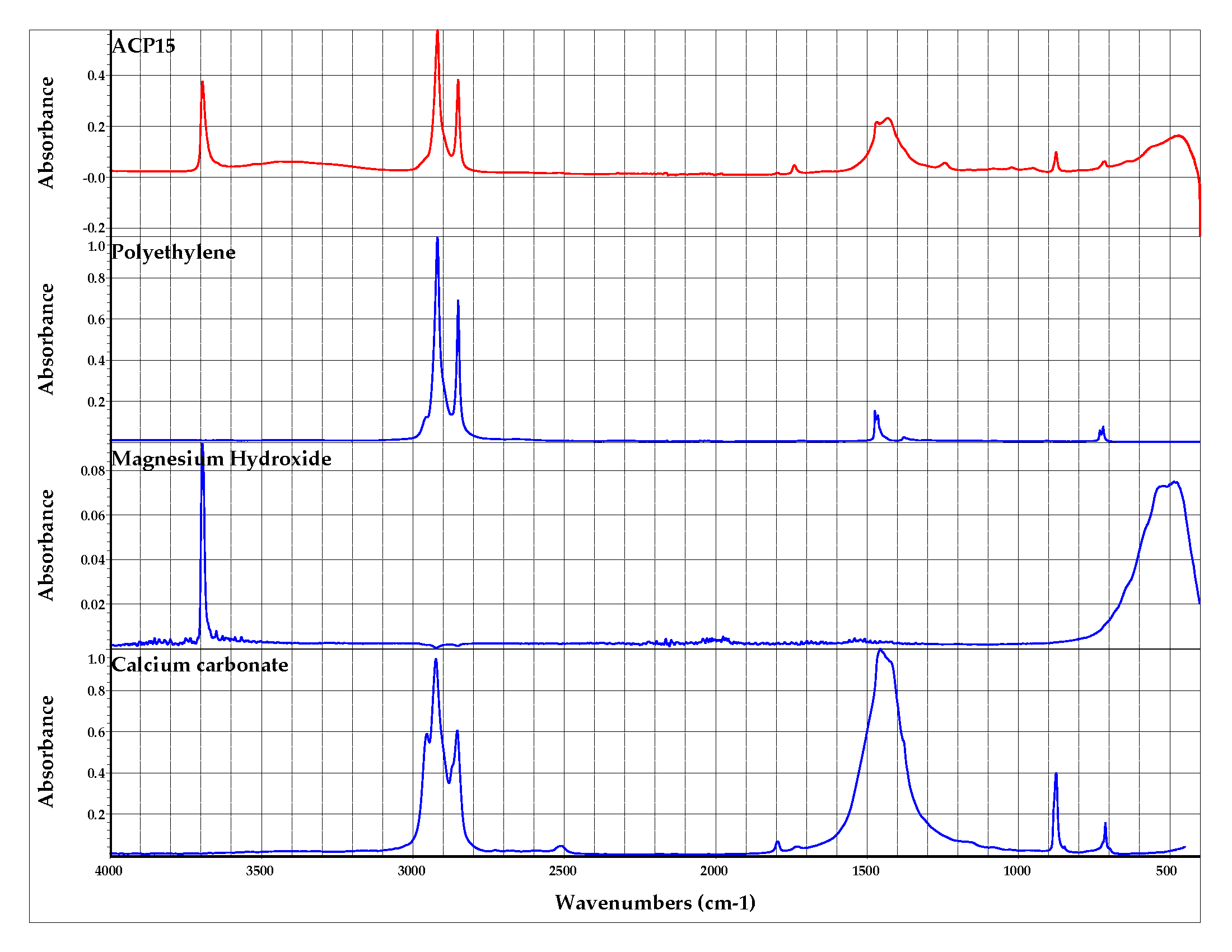
A.2 Energy Dispersive X-Ray Fluorescence (EDXRF)
| Element | Mass Concentration (%) |
|---|---|
| Mg | 21 |
| Ca | 9 |
| Si | 2 |
| Na | 1 |
| Fe | 1 |
| K | <1 |
| Al | <1 |
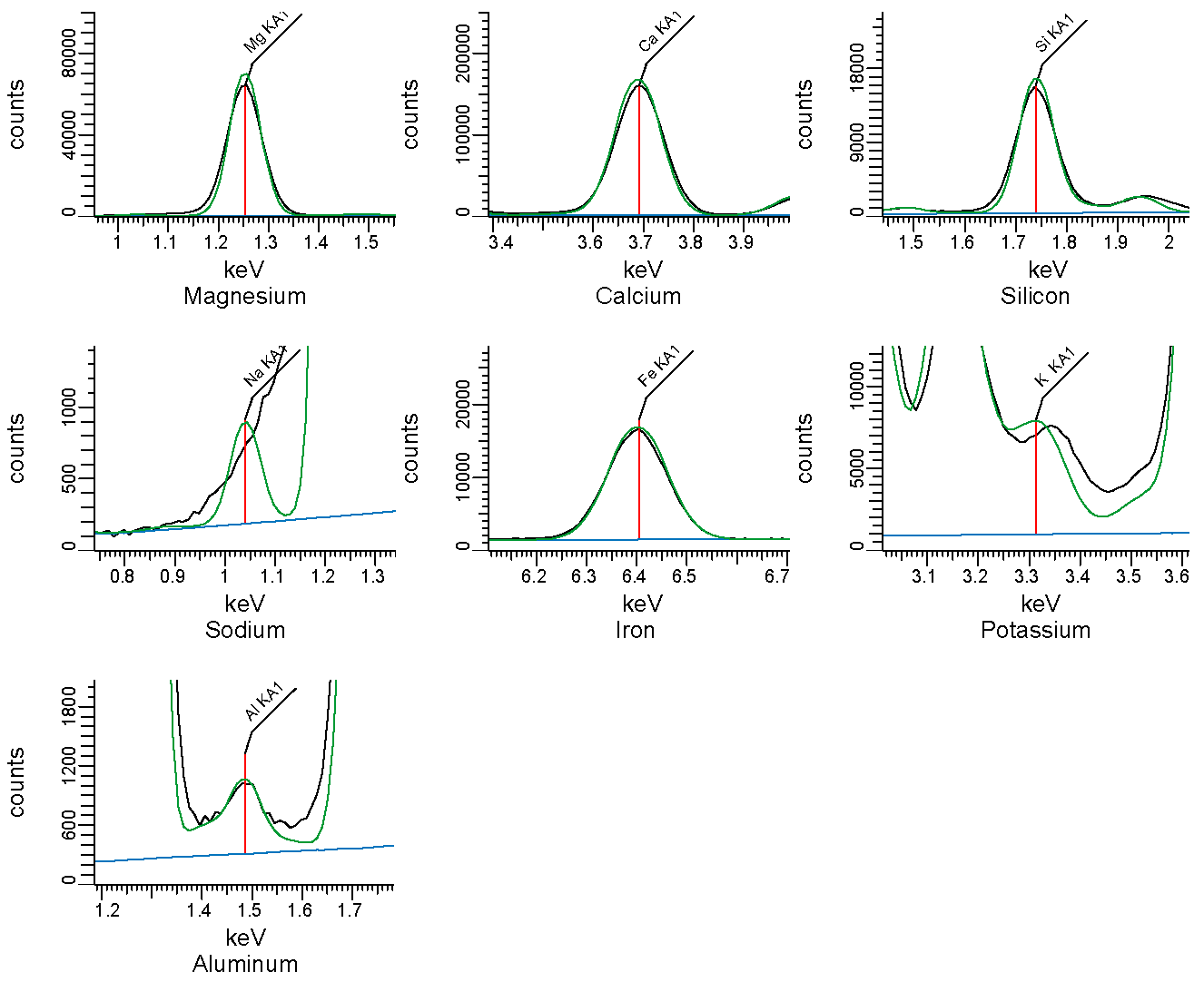
B. Thermogravimetric analysis
| Condition | Fraction of mass residue at 800°C |
|---|---|
| Non-oxidative (nitrogen) | 0.47 |
| Oxidative (air) | 0.48 |
| Peak ID | Temperature peak (°C) | Amplitude of peak (°C-1) |
|---|---|---|
| Peak 1 | 391 | 2.18 x 10-3 |
| Peak 2 | 486 | 8.86 x 10-3 |
| Peak 3 | 729 | 1.42 x 10-3 |
| Peak ID | Temperature peak (°C) | Amplitude of peak (°C-1) |
|---|---|---|
| Peak 1 | 413 | 3.24 x 10-3 |
| Peak 2 | 462 | 7.46 x 10-3 |
| Peak 3 | 725 | 1.31 x 10-3 |
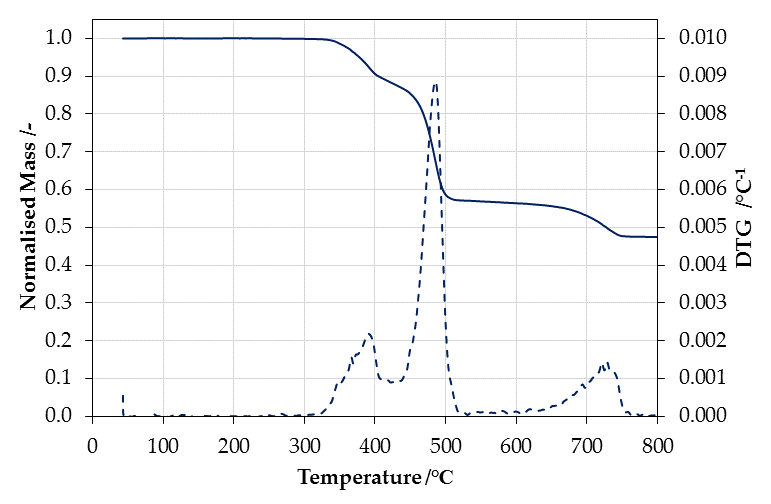

C. Gross Heat of Combustion
| Trial | ΔHc [kJ g-1] |
|---|---|
| Trial 1 | 13.81 |
| Trial 2 | 13.91 |
| Trial 3 | 14.02 |
| Average | 13.91 |
| Std dev | 0.11 |
D. Ignition parameters
| Critical heat flux for ignition | Ignition temperature | Total heat transfer coefficient of losses | Apparent thermal inertia |
|---|---|---|---|
| q̇″cr [kW m−2] | Tig [°C] | hr [W m-2 K-1] | kρc [kW2 m-4 K-2 s] |
| 28 | 502 | 52.30 | 1.309 |
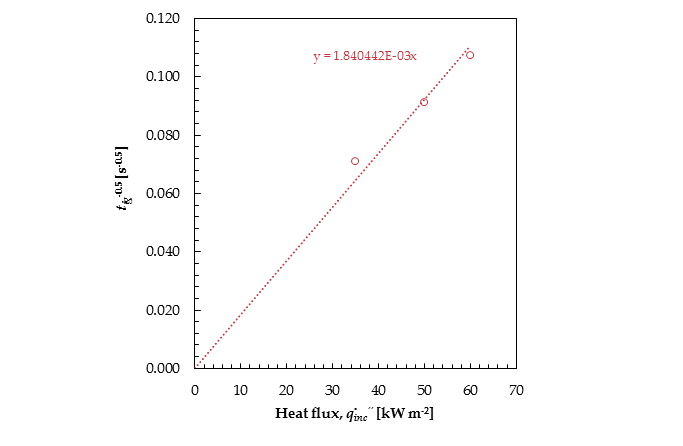
E. Burning behaviour
| Heat flux | Test | Time to ignition | Fraction of mass residue | Peak heat release rate | Total energy released |
|---|---|---|---|---|---|
| q̇″inc [kW m-2] | tig [s] | mres [-] | q̇″p [kW m-2] | Qt [MJ m-2] | 35 kW m-2 |
| Test 1 | 201 | 0.56 | 136.75 | 117.56 | |
| Test 2 | 196 | 0.54 | 136.74 | 122.34 | |
| Avg | 198 | 0.55 | 136.75 | 119.95 | 50 kW m-2 |
| Test 1 | 122 | 0.53 | 162.67 | 128.70 | |
| Test 2 | 118 | 0.53 | 155.72 | 130.52 | |
| Avg | 120 | 0.53 | 159.20 | 129.61 | 60 kW m-2 |
| Test 1 | 88 | 0.52 | 204.66 | 127.36 | |
| Test 2 | 86 | 0.52 | 207.43 | 126.44 | |
| Avg | 87 | 0.52 | 206.05 | 126.90 | 80 kW m-2 |
| Test 1 | - | - | - | - | |
| Test 2 | - | - | - | - | |
| Avg | - | - | - | - |
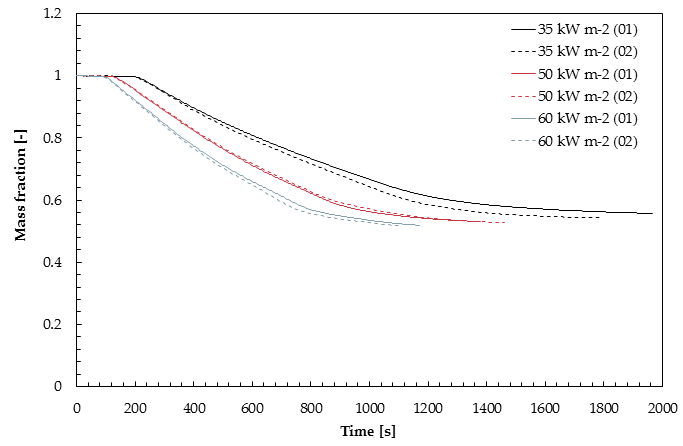
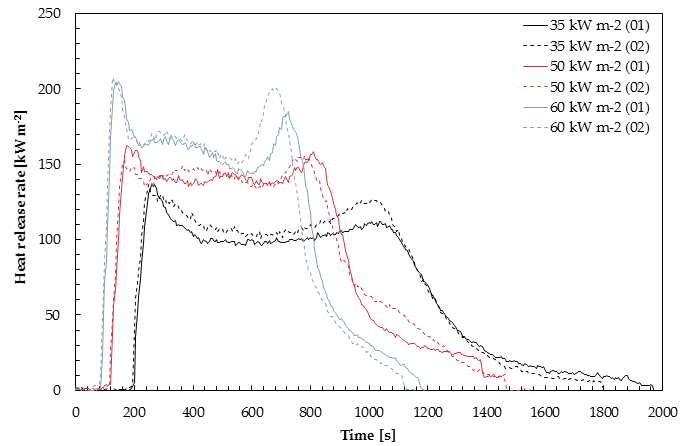
| Test | ΔHc [kJ g-1] |
|---|---|
| 35 kW m-2 (Test 1) | 32.60 |
| 35 kW m-2 (Test 2) | 33.29 |
| 50 kW m-2 (Test 1) | 33.71 |
| 50 kW m-2 (Test 2) | 33.07 |
| 60 kW m-2 (Test 1) | 32.28 |
| 60 kW m-2 (Test 2) | 32.44 |
| 80 kW m-2 (Test 1) | - |
| 80 kW m-2 (Test 2) | - |
| Average | 32.90 |
| Std dev | 0.55 |
F. Flame Spread
| Orientation | q̇″min.spread [kW m-2] | Vf.min [mm s-1] |
|---|---|---|
| Horizontal | 20.30 | 0.20 |
| Vertical | 19 | 1.70 |

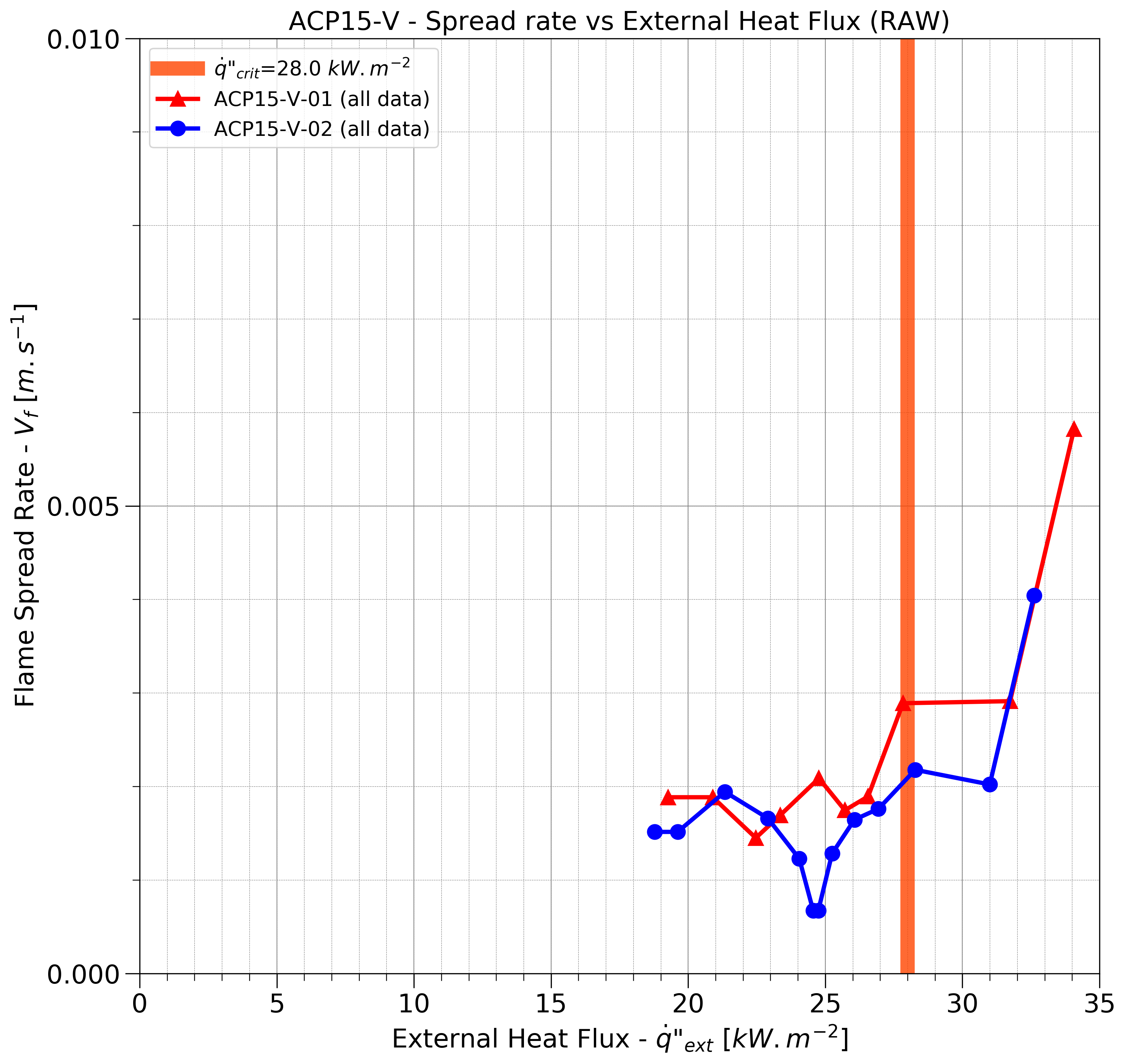

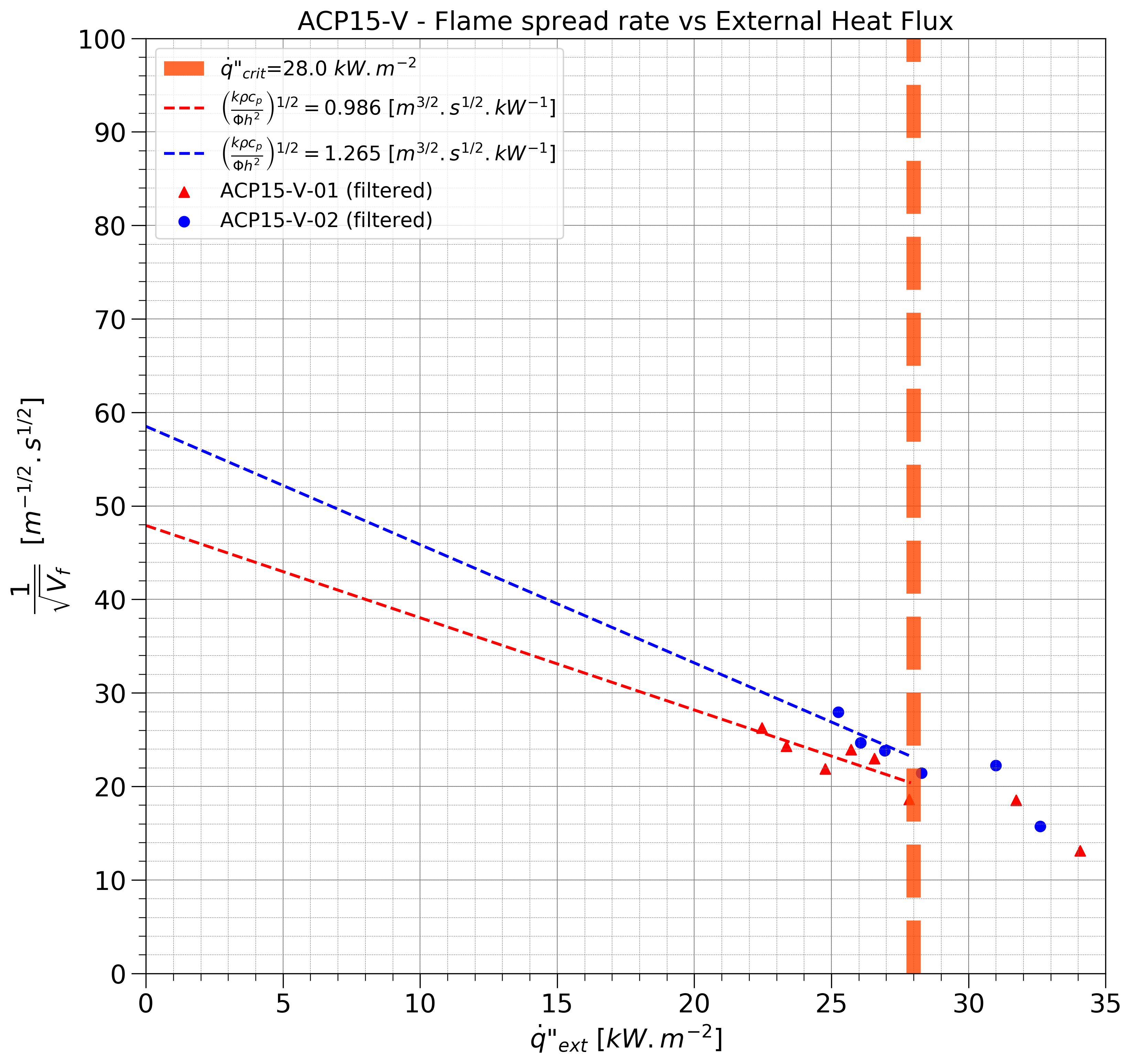
| Orientation | Trial | (kρcp⁄Φh2)1⁄2 [m3⁄2 s1⁄2 kW-1] | Φ [kW2 m-3] |
|---|---|---|---|
| Horizontal | 1 | 3.898 | 31.51 |
| Horizontal | 2 | 4.501 | 23.64 |
| Vertical | 1 | 0.986 | 492.16 |
| Vertical | 2 | 1.265 | 299.32 |